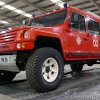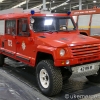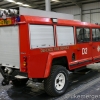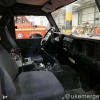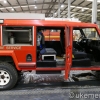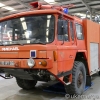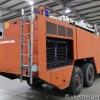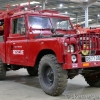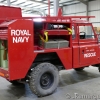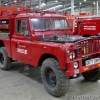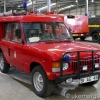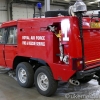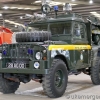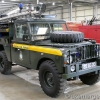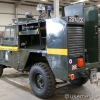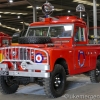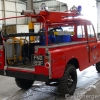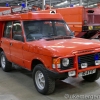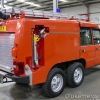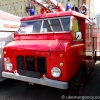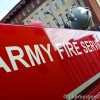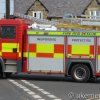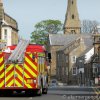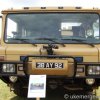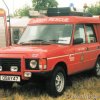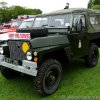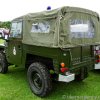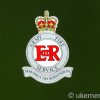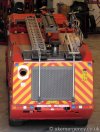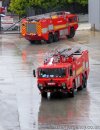Category: Military Fire
51 AG 49 / GBG 542Y RAF Fire and Rescue Service TACR2
51 AG 49 / GBG 542Y
RAF Fire and Rescue Service
TACR2
The TACR2 was the replacement for the TACR1 and was introduced to the RAF Fire Service in 1977. It was based on a chassis which was developed by Carmichael and Sons in the early 1970s. The RAF ordered some 46 which had Gloster Saro bodywork. HCB – Angus also built a further 18. They remained in service until 1985 and were replaced by the TACR2A. Seen at the Museum of RAF Firefighting.
28 AG 00 RAF Fire and Rescue Service TACR1
28 AG 00
RAF Fire and Rescue Service
TACR1
The TACR1 came into service in 1972 and was the beginning of a new generation of rescue tender for the RAF. It superseded the ACRT (Dry Powder) and TACT (Old type Foam). The TACR1 carried a new fire fighting media which was AFFF (Aqueous Film Forming Foam) which was pre-mixed in the tank. It also carried an EPCO Hydraulic Rescue kit and a Pneumatic powered ‘Ripper Gun’. It was capable of acting in an unsupported roll on advanced airfields operating with the HARRIER aircraft with a crew of three, but would also act as the rescue truck along with major foams trucks on large Crash Lines. With the requirement for a crew of three and only a standard cab, a seating position was created at the rear of the vehicle for the third crew member whose only communication to the cab was via a voice tube. Not always popular with crew members when assigned to this vehicle!!! This vehicle 28 AG 00 on display is the very first that was supplied to the RAF Fire Service. As well as carrying out Crash Line duties 28 AG 00 was deployed in 1977 to St. George’s Barracks in Sutton Coalfield dring the National Fireman’s Strike, (Operation Burbury). The crews acted as a B.A. team in support of 42 Marine Commando and attended some 230 incidents in a 58 day period. It saw service at RAF units Manston, Newton and Swinderby before being sold at the end of its service. It was recovered from Lydden Motor Race Circuit in Kent where it had been used as fire and rescue truck. During its extensive restoration it revealed eight layers of paint which included red, green and Day-Glo. Seen at the Museum of RAF Firefighting.
10 AY 11 RAF Fire Service Truck Airfield Crash Rescue Mk2A (TACR2A)
10 AY 11
RAF Fire Service
Truck Airfield Crash Rescue Mk2A (TACR2A)
The TACR2A is a variant of the TACR2 which was the replacement for the TACR1 and was introduced into the RAF Fire Service in 1977. The RAF ordered some 46 which had Gloster Saro bodywork. HCB-Angs also built a further 18. The TACR2 remained in service until 1985 and were replaced by the TACR2A. This was to be the last of the small rescue vehicles and would be replaced by the larger RIVs (Rapid Intervention Vehicle) which was the new parlance for a rescue vehicle. The main differences between the TACR2 and 2A were the front bumper and lighting arrangement and the use of fuel injected engine. The vehicle displayed 10 AY 11 served its days in ‘The Queens Flight’ deploying to various sites though out the UK helping to safeguard the Royal Family. The TACR2A lasted until the late 1990s. Seen at the Museum of RAF Firefighting.
The following three photographs are of American…

The following three photographs are of American military fire appliances used in the UK. They don’t carry registration marks because they are not used on the public roads. Appliance 15 is a P-24 Water Ladder. Notice the red light bar and dark body colour.
This appliance (also numbered 15) is a RIV (Rapid Intervention Vehicle). It can also double-up as a communication vehicle.
Number 14 is a massive P-18 water carrier.

